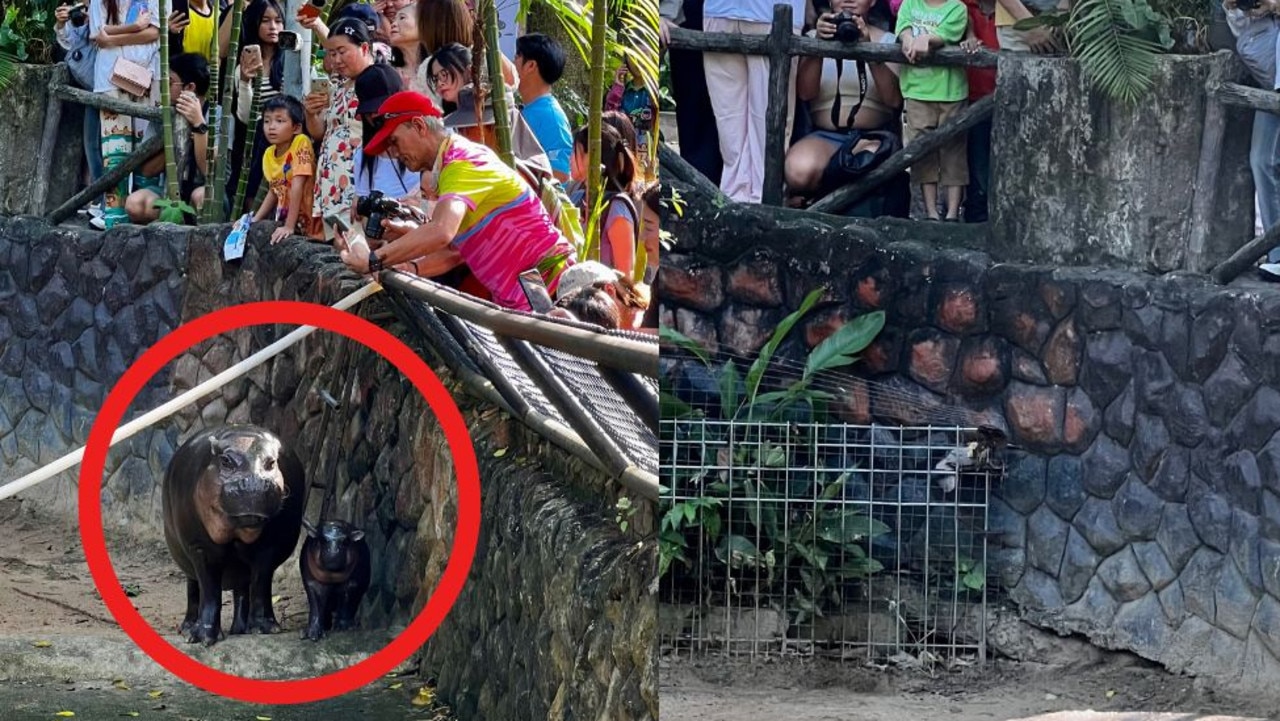Heartbreaking sight at popular Bali beach as travel restarts at holiday island
Less than two months after opening the border to Australian travellers, Bali beaches have turned into a scene not witnessed since 2019.
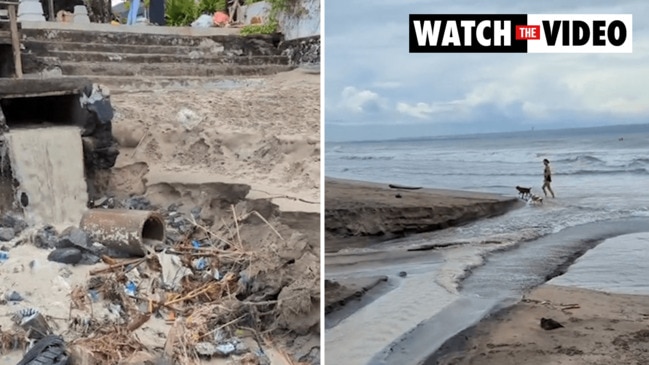
It was the border opening thousands of Australians eagerly waited for.
Bali reopened to travellers from Down Under on March 14 this year, almost two years after the island was closed off amid the global Covid-19 pandemic.
But in the weeks following the influx of Aussies visiting Bali, confronting new pictures have revealed a beach in Bali littered with rubbish and murky water in the wake of borders reopening to tourists.
Pictures of Canggu’s once pristine shoreline, especially amid the pandemic when the holiday island received next to no tourists, is now strewn with debris, rubbish and plastic waste. The rubbish is a direct result following the annual monsoon season, but experts say the increase in visitors has only added to the concerning problem.

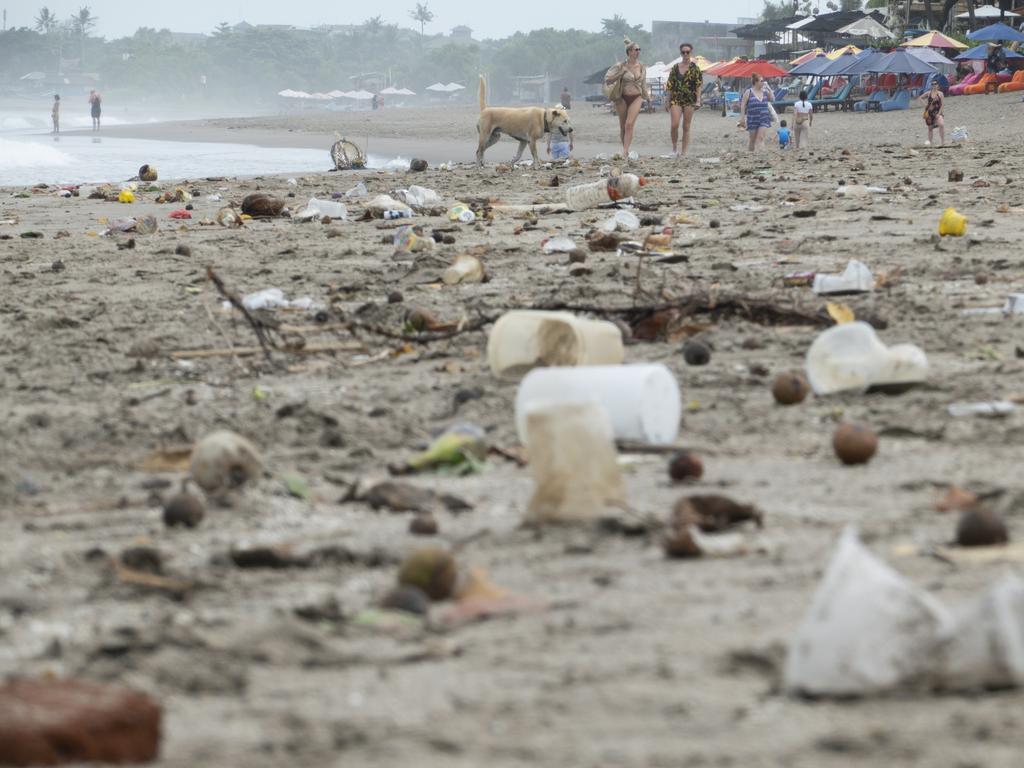
The photos are a far cry from images earlier in the year, which showed beaches looking far less polluted.
In more recent shots, the piled up rubbish on the beach is broken up by locals, tourists and even dogs walking around the mess.
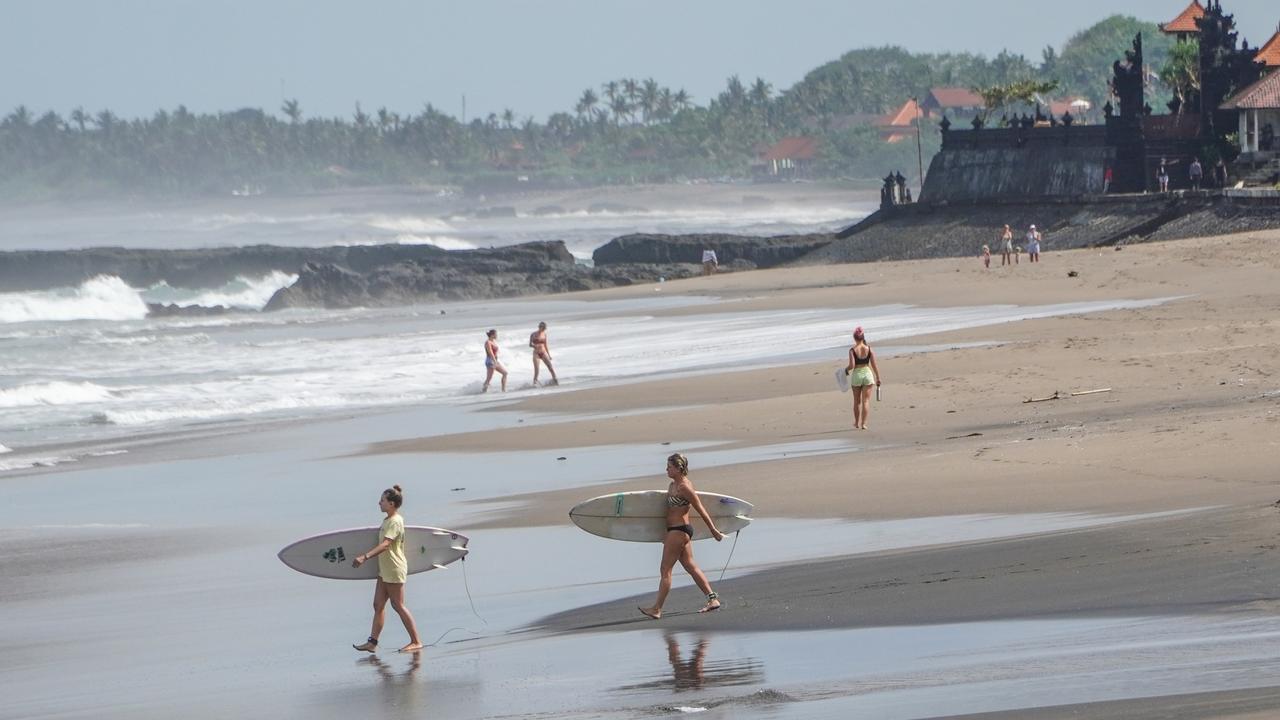
Last month, TikToker human4800 posted a video showing a brown river of water flowing into the ocean at Seminyak and how littered the region had quickly become following the border reopening.
Captions on the video read: “Bali: reopens for tourism. Businesses: you think things will return to normal quickly? Me: um, yes?”
“Seminyak has some good soup to swim in,” the woman wrote alongside the video, referring to the dirty water flowing into the ocean.
When users questioned how officials could let the pollution get so bad, the TikToker noted that there are actually “multiple tractors and clean up crews working every day to try and keep it at bay”.
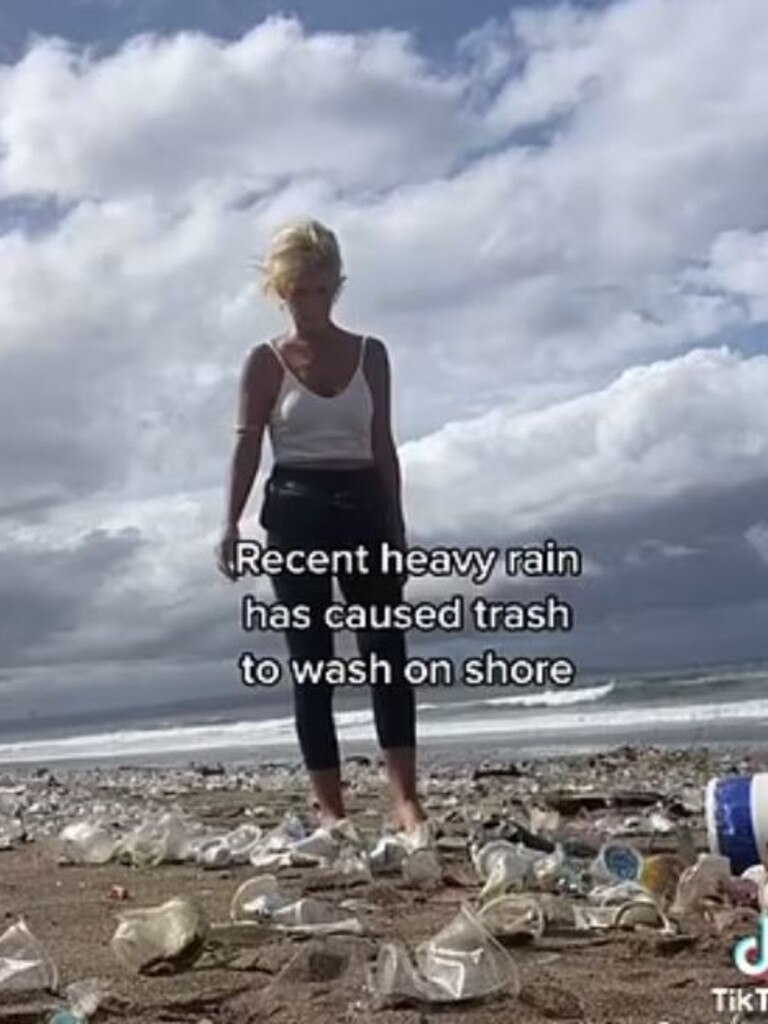

She told the Daily Mail that Bali already has an “overflowing waste infrastructure” and any influx of visitors burdens the system even more.
She also claimed a local river near Seminyak turned red after businesses poured dyes into the water after making clothes to sell to tourists.

In late 2017, Bali declared a “garbage emergency” across a 6km stretch of coast that included popular beaches Jimbaran, Kuta and Seminyak.
Officials deployed 700 cleaners and 35 trucks to remove roughly 100 tons of debris each day to a nearby landfill.
“People with green uniforms were collecting the garbage to move it away but the next day I saw the same situation,” said Claus Dignas, a German who claimed he saw more garbage with each visit to the island.
“No one wants to sit on nice beach chairs and facing all this rubbish.”
Bali’s rubbish problem is at its worst during the annual monsoon season, when strong winds push marine flotsam on to the beach and swollen rivers wash rubbish from riverbanks to the coast, according to Putu Eka Merthawan from the local environment agency.
Bali’s Kuta beach had the same problem early last year, despite the island being off-limits to international tourists.

Overall Indonesia has a battle with pollution, given it is the second biggest polluting county in the world and produces 130,000 tons of solid and liquid waste each day.
“Bali’s trash problem is getting worse day by day,” Local environmental group Zero Waste Centre posted recently.
“We look forward to the seriousness of the government in dealing with this Bali’s trash problem. It will be a major challenge.”
Since border reopened to Australians, thousands have flocked to Bali. Prior to the pandemic, around 1.23 million Aussies travelled to the holiday island in 2019.




